How to Convert an Induction Cooktop at Home into a Gas Cooktop
Customer concerns:
As an Asian family, the client finds the induction cooktop at home not powerful enough and wants to convert it into a gas cooktop. Happi Plumbing is responsible for the gas system remodeling work.
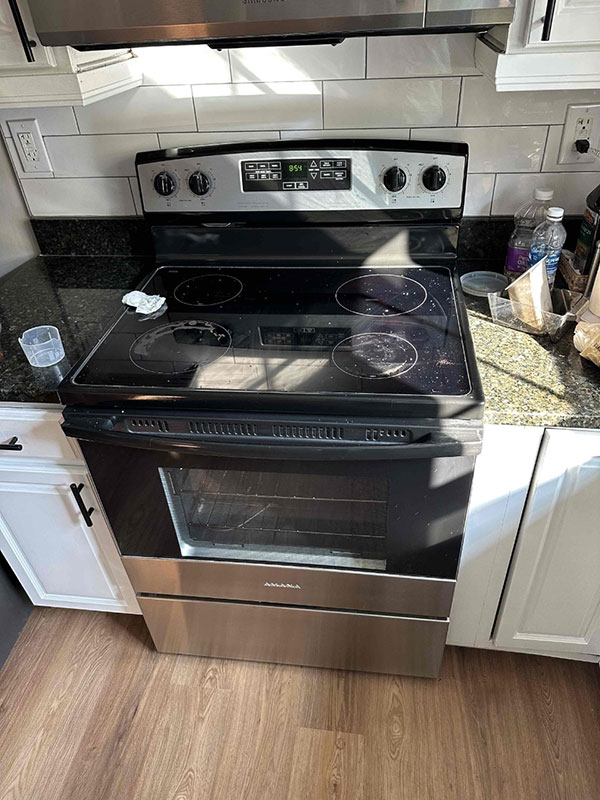
Step 1: Assess the Route for the New Gas Line and Verify Feasibility
We proposed two options for the client to choose from:
Option 1: Dig a trench from the gas meter outside, going around half the house (about 150 feet) to reach the exterior wall of the kitchen. Drill through the exterior wall to bring the gas line into the kitchen. This route passes through the backyard patio and will significantly damage the landscape, which will require hiring a separate contractor for landscape restoration.
Option 2: Drill through the garage and bring the new gas line indoors. Open the drywall from the garage to the attic, run the gas line through the attic to a point above the kitchen, then open the drywall to bring the gas line down into the kitchen. This plan would require opening a large amount of drywall on both the first and second floors, and all drywall repairs would need to be handled by others.
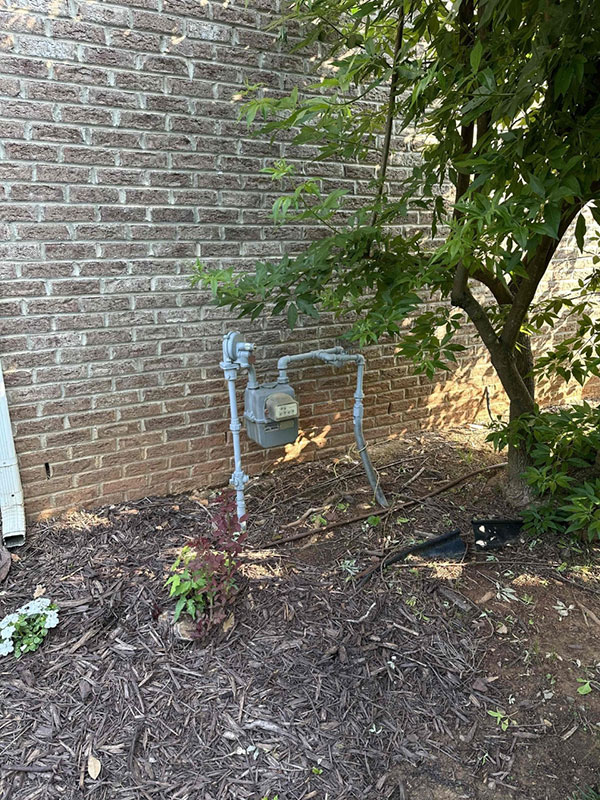
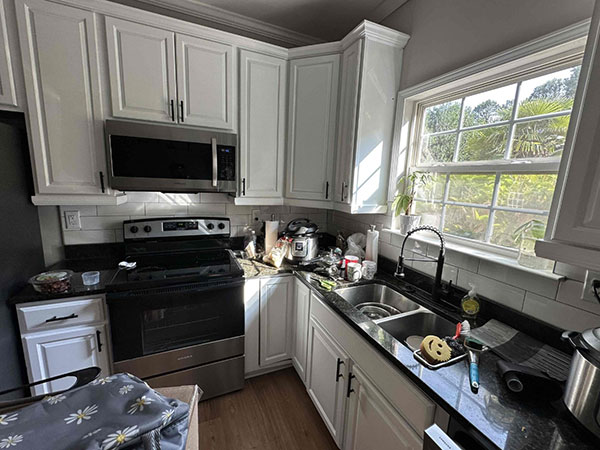
Option1:
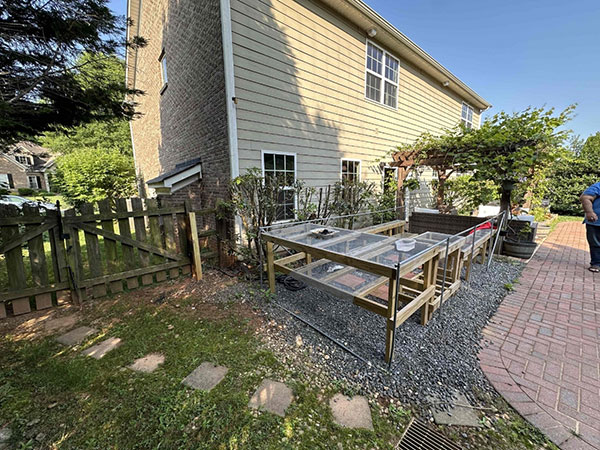
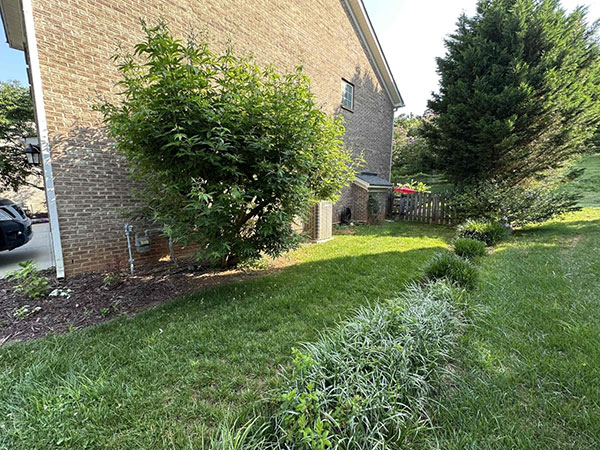
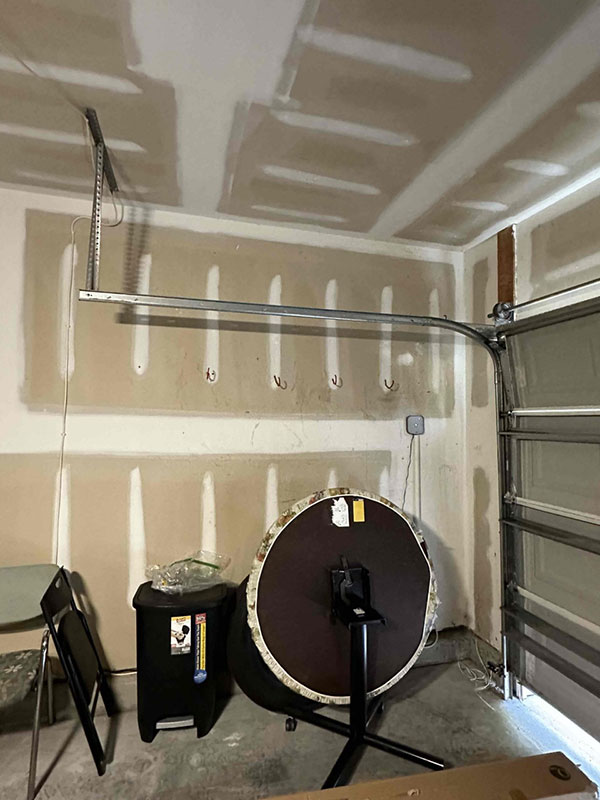
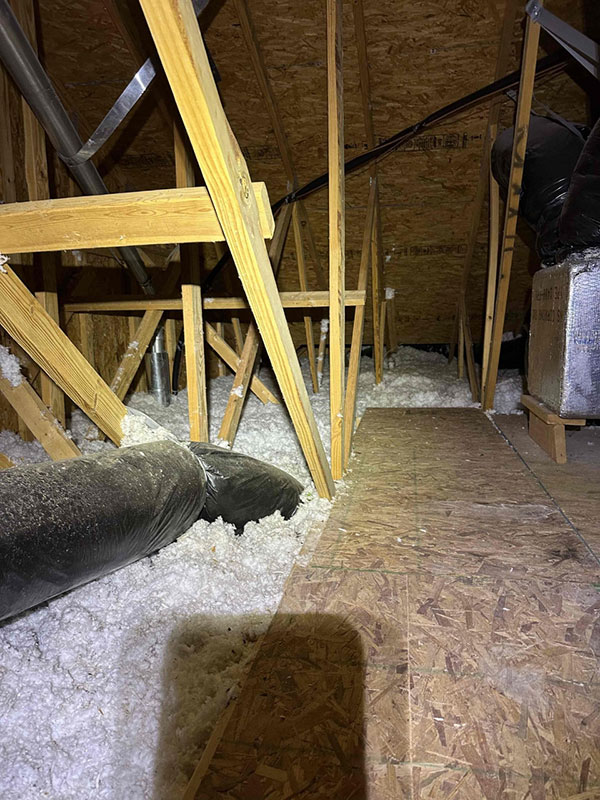
The client did not want to open up walls throughout the house and chose Option 1, the outdoor trenching route.
Step 2: Apply for a Permit from the County
Step 3: Call 811 to Mark Existing Underground Utility Lines
We had the underground lines marked on the right side and backyard of the house.
Step 4: Trenching
Before beginning excavation, we discovered that there was a thick concrete slab beneath the patio tiles. The client did not want to destroy this entire slab.
We decided to design a new route to avoid the concrete slab by trenching around the swimming pool.
Near the pool, we found an existing gas line that serves the pool equipment. We branched a new line from this existing gas line to the kitchen, which significantly shortened the route. The pipe size is 3/4 inch, which meets code requirements.
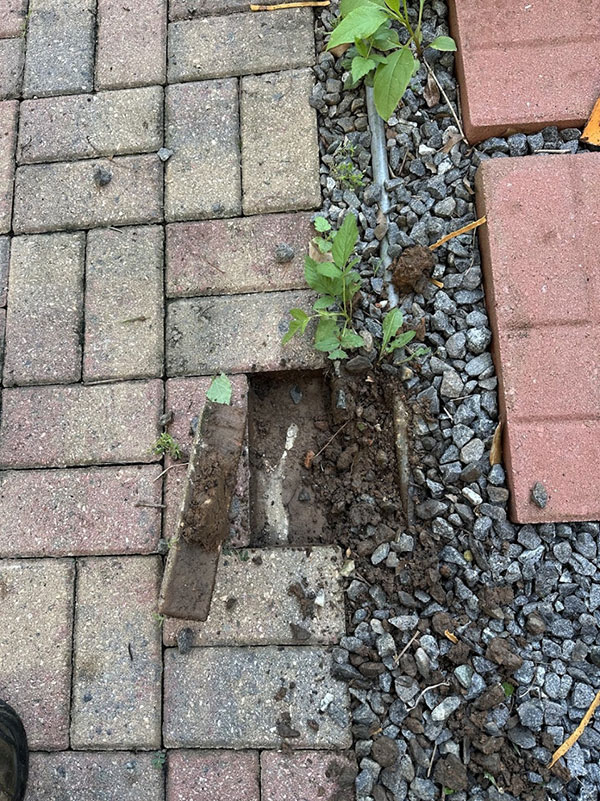

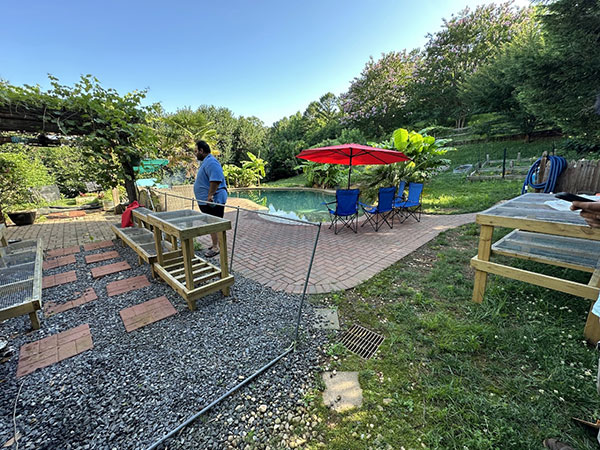
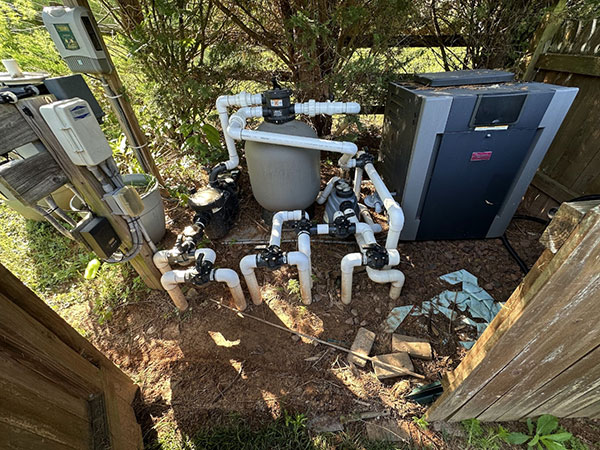
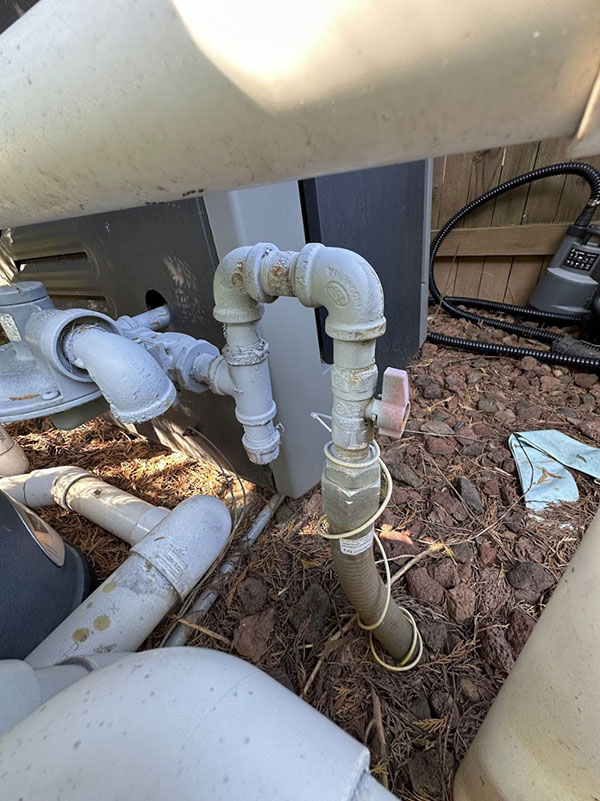
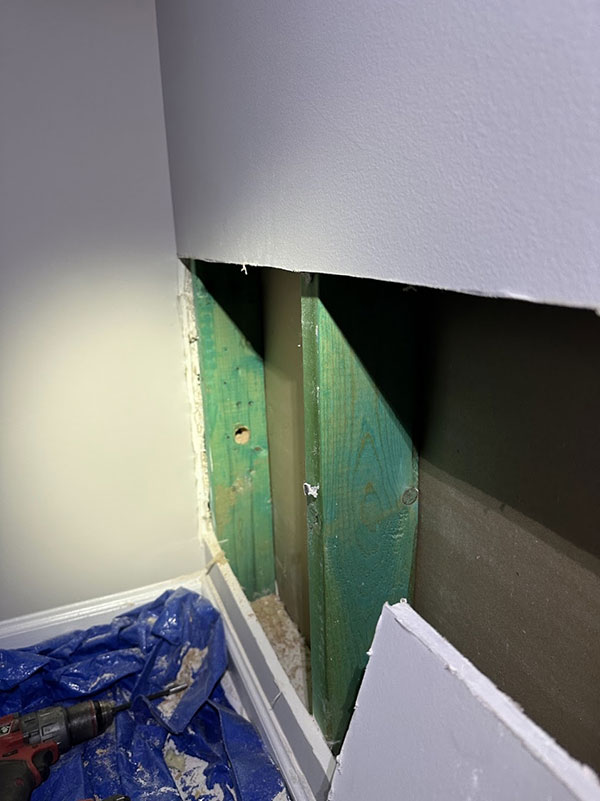


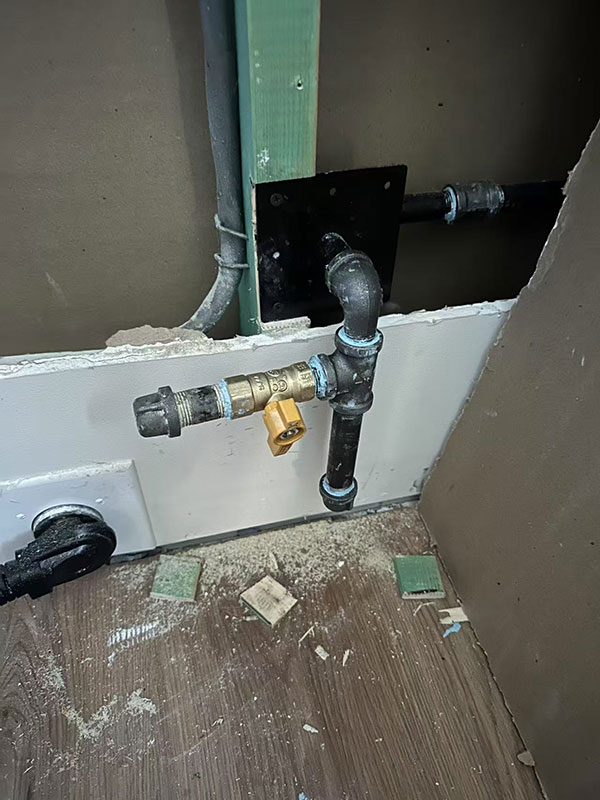
Step 5: Indoor Wall Work
We opened the drywall behind the kitchen, drilled holes through the studs, installed black iron gas pipes, secured them to the studs, and re-covered the drywall.
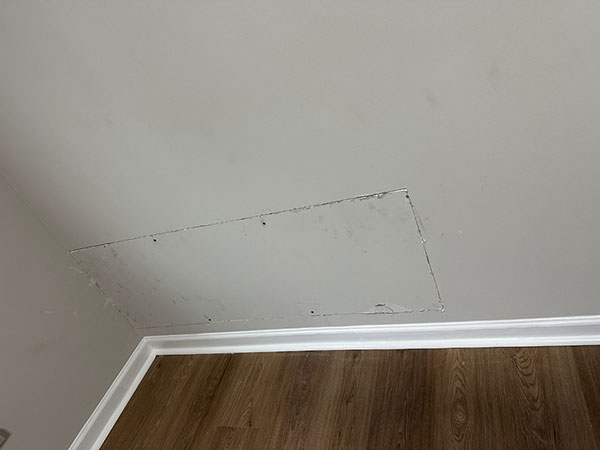
Step 6: Run and Connect the Gas Line
We installed tracer wires along with the gas line to facilitate future underground pipe detection.
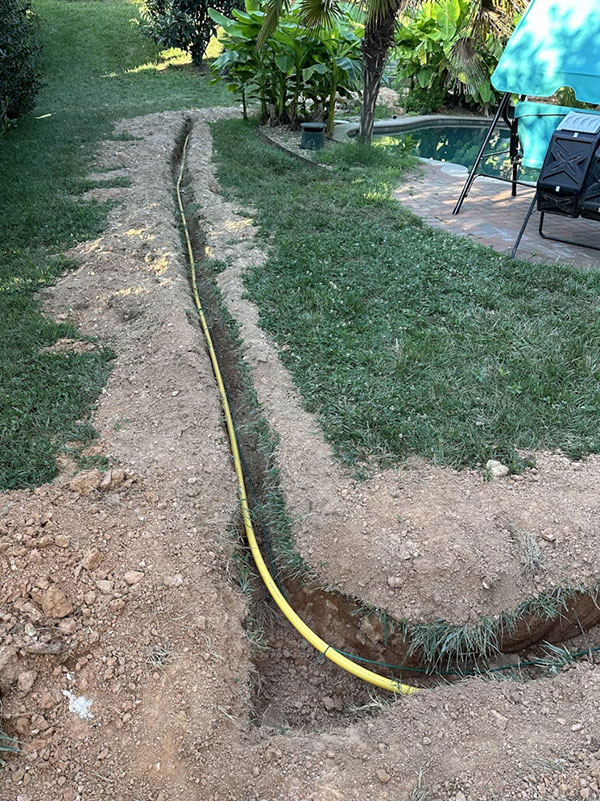

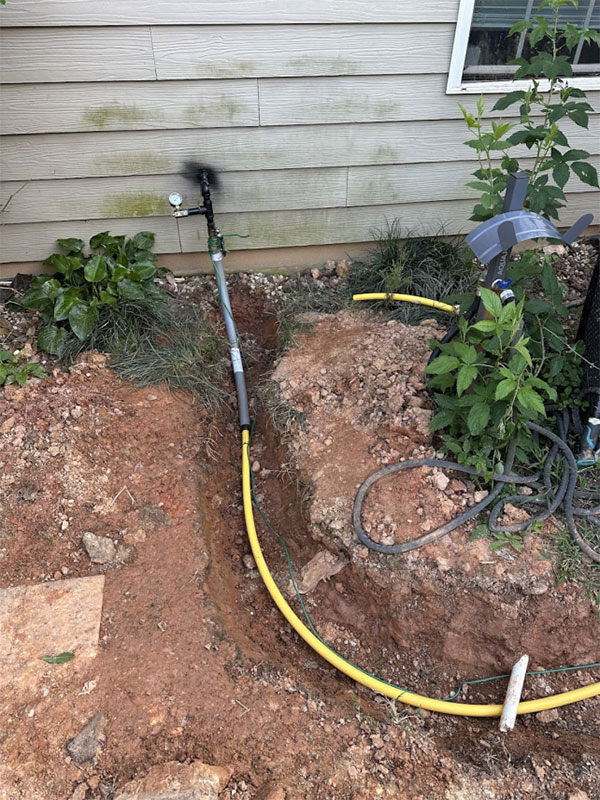
Step 7: Apply Anti-Corrosion Coating to Outdoor Black Iron Pipes
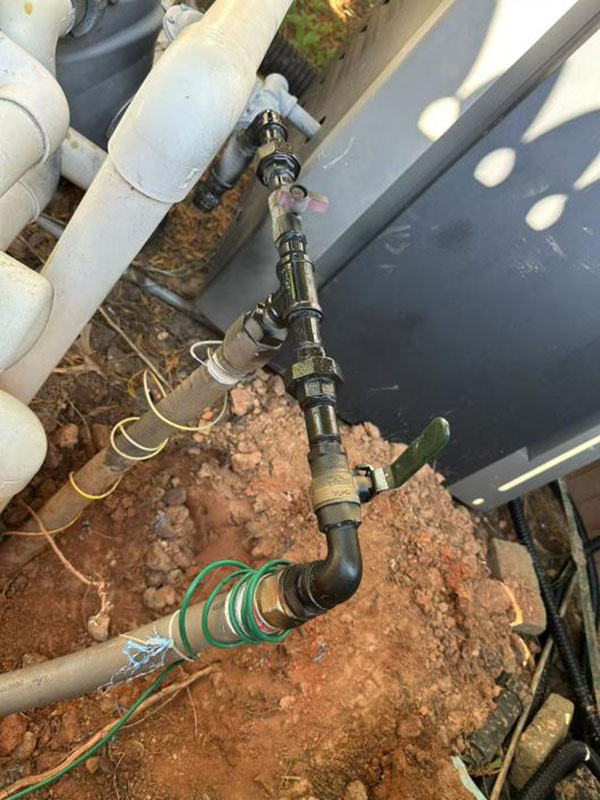
Step 8: Pressure Test Before Inspection
We closed all relevant valves, capped off unused lines, pumped in high-pressure air, and waited for inspection.

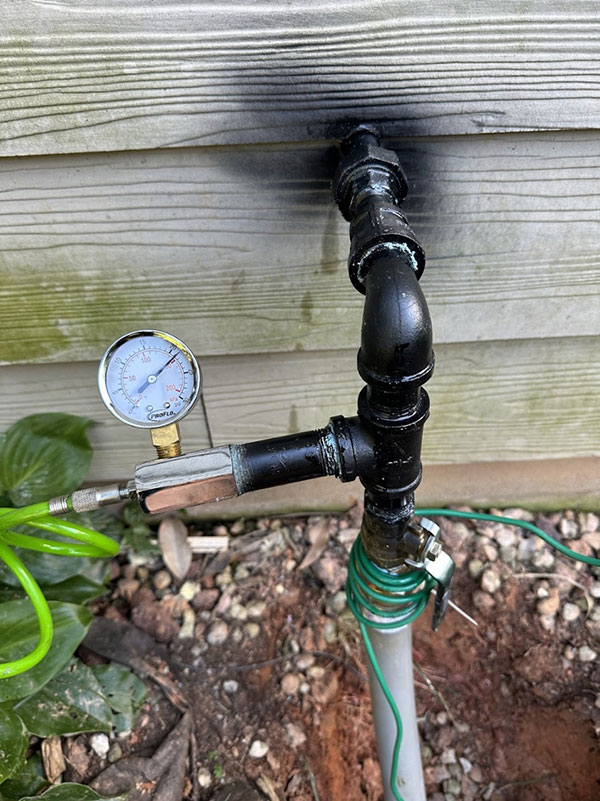
Step 9: Inspection Passed
We backfilled the trench after a successful inspection.
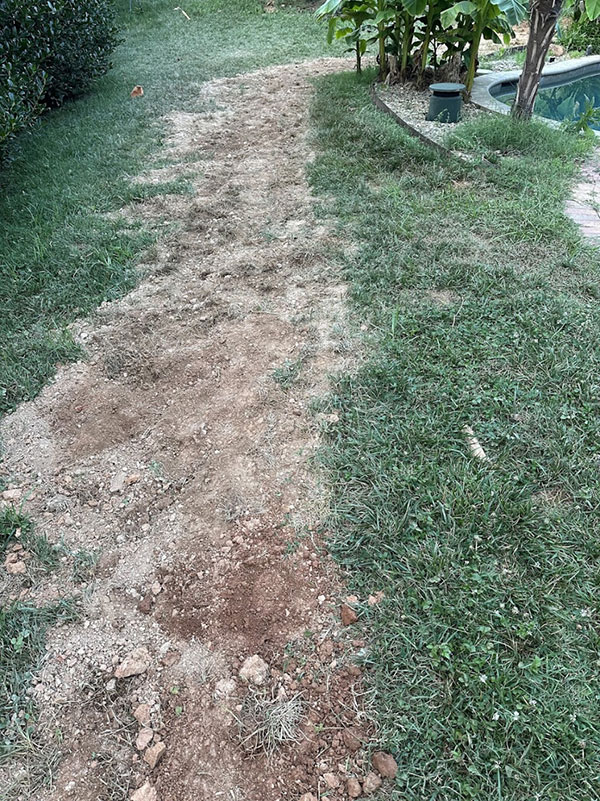
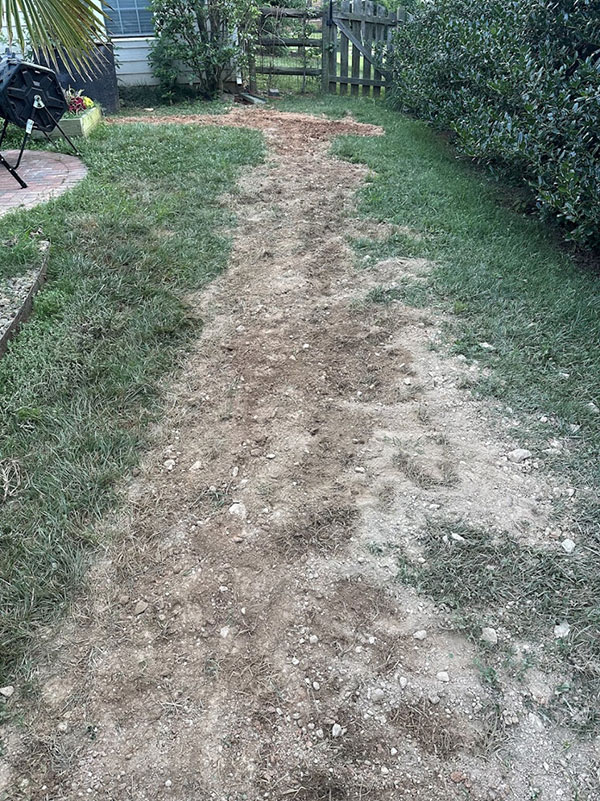
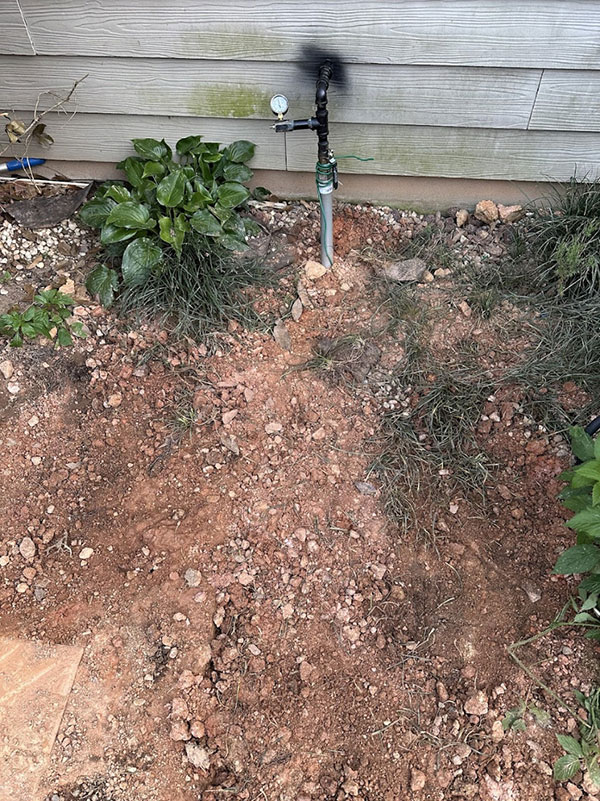
Step 10:
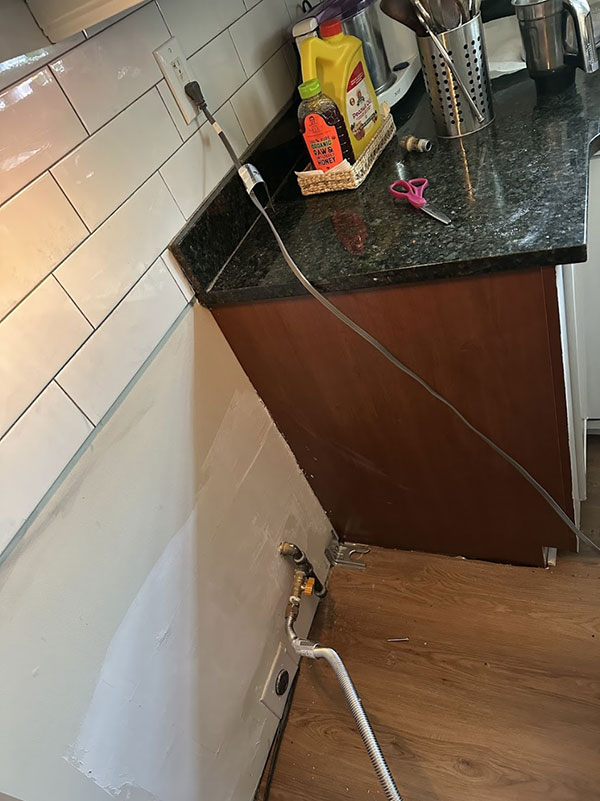
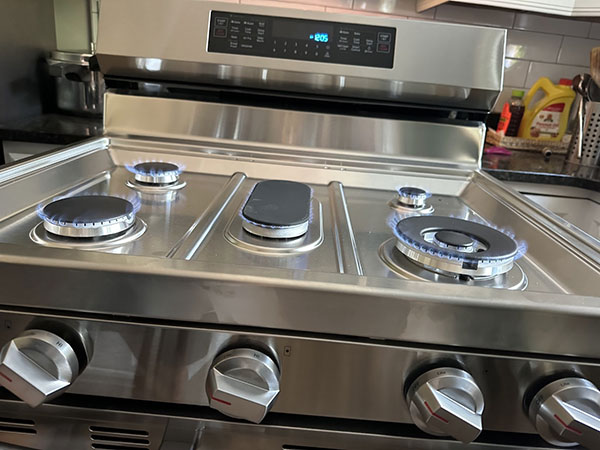
Step 10: Final Setup
We opened the valves, purged the air, connected the new gas cooktop, and conducted ignition testing.
The client was very satisfied — truly “Happi”!
如何把家里的电磁灶(induction cooktop)改造成煤气灶(gas cooktop)
客户问题,作为亚裔,家里的电磁灶不得力,希望改造成煤气灶。Happi plumbing 承接煤气改造部分的工程。
第一步:勘察gas新管道的路线,验证可行性
我们给出两个方案供客户选择
方案1:从gas meter 室外挖沟,绕房子半圈150ft,到厨房外墙,外墙钻孔,进入厨房。需要穿过后院patio,对landscape会有较大破坏,需要另外找人做landscape.
方案2:从车库钻洞,将新gas line引入室内,打开drywall 从车库到attic, 穿过attic,到达厨房上方位置,打开drywall 从attic 引到厨房。需要打开一楼二楼大量的drywall,需要另外找人修复所有drywall
客户不想把家里的墙都打开,选择了方案1走室外挖沟的路线
第二步,在county申请permit
第三步,打811 标注房子右侧和后院的地下管线
第四步,挖沟作业。
在准备开挖之前,发现patio地砖的下面是厚厚的水泥,客户不想把这个水泥全部破坏掉
我们准备设计新路线,绕开水泥板,绕着游泳池挖沟排线
我们在游泳池旁边,找到了为游泳池服务的gas路线,从这里引出一根新路线到厨房,可以大大节省路线,管线尺寸是3/4inch, 符合code 的规定和需要,
第五步,室内开墙作业
把厨房背面drywall打开,在stud上钻孔,安装gas black iron 黑铁管,并固定在stud上,重新盖上drywall板
第6步,管道布线并连接
同步布设跟踪线tracer wires, 以方便未来探测地下管线。
第7步,给室外黑铁管喷上防腐蚀涂料
第8步,关闭相关阀门,cap 待用的管线,泵入高压空气,等待inspection
第9步,inspection顺利通过以后,backfill 回填
第10步,打开阀门,排除空气,连接新的煤气灶,点火测试
客户验收,非常Happi !


